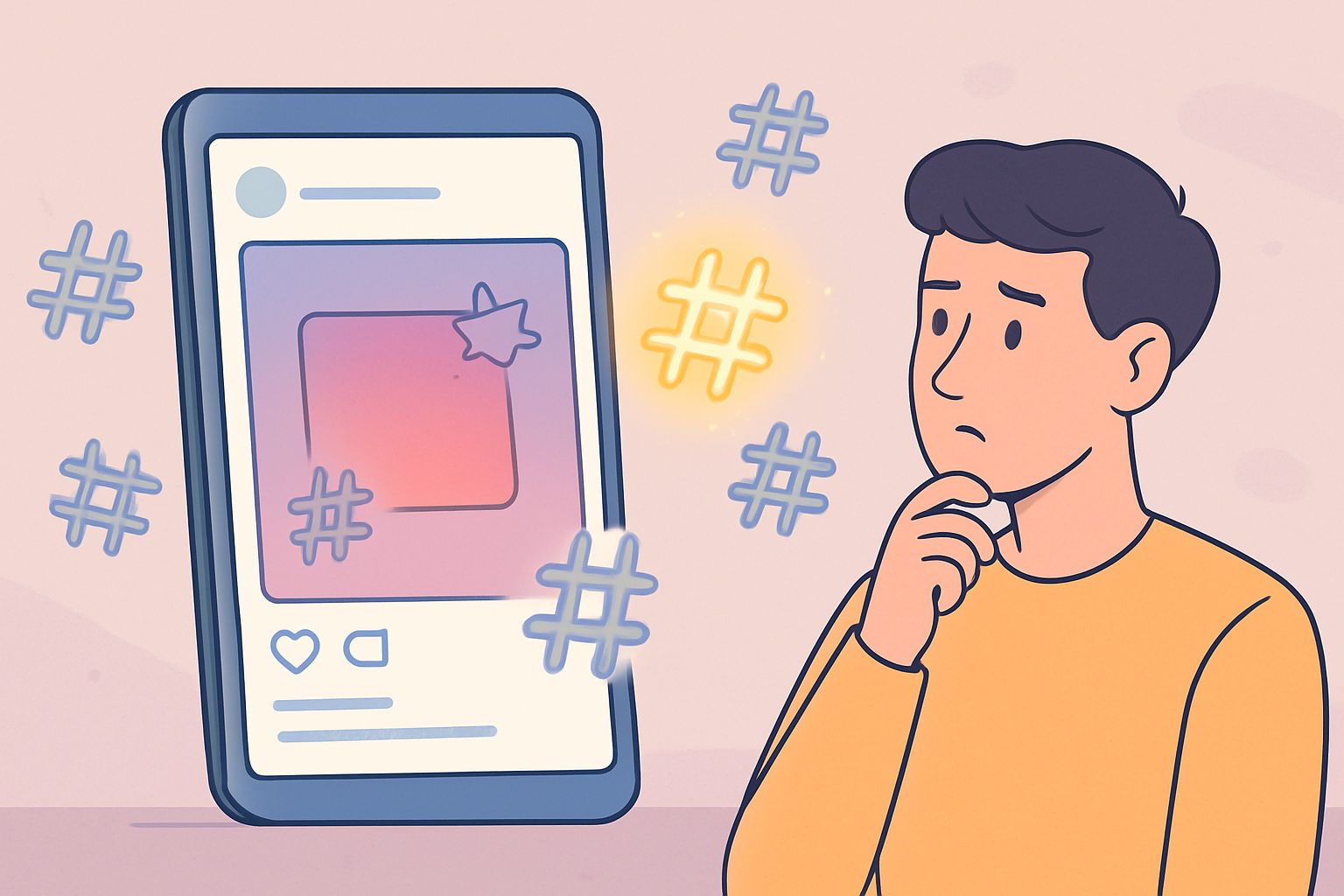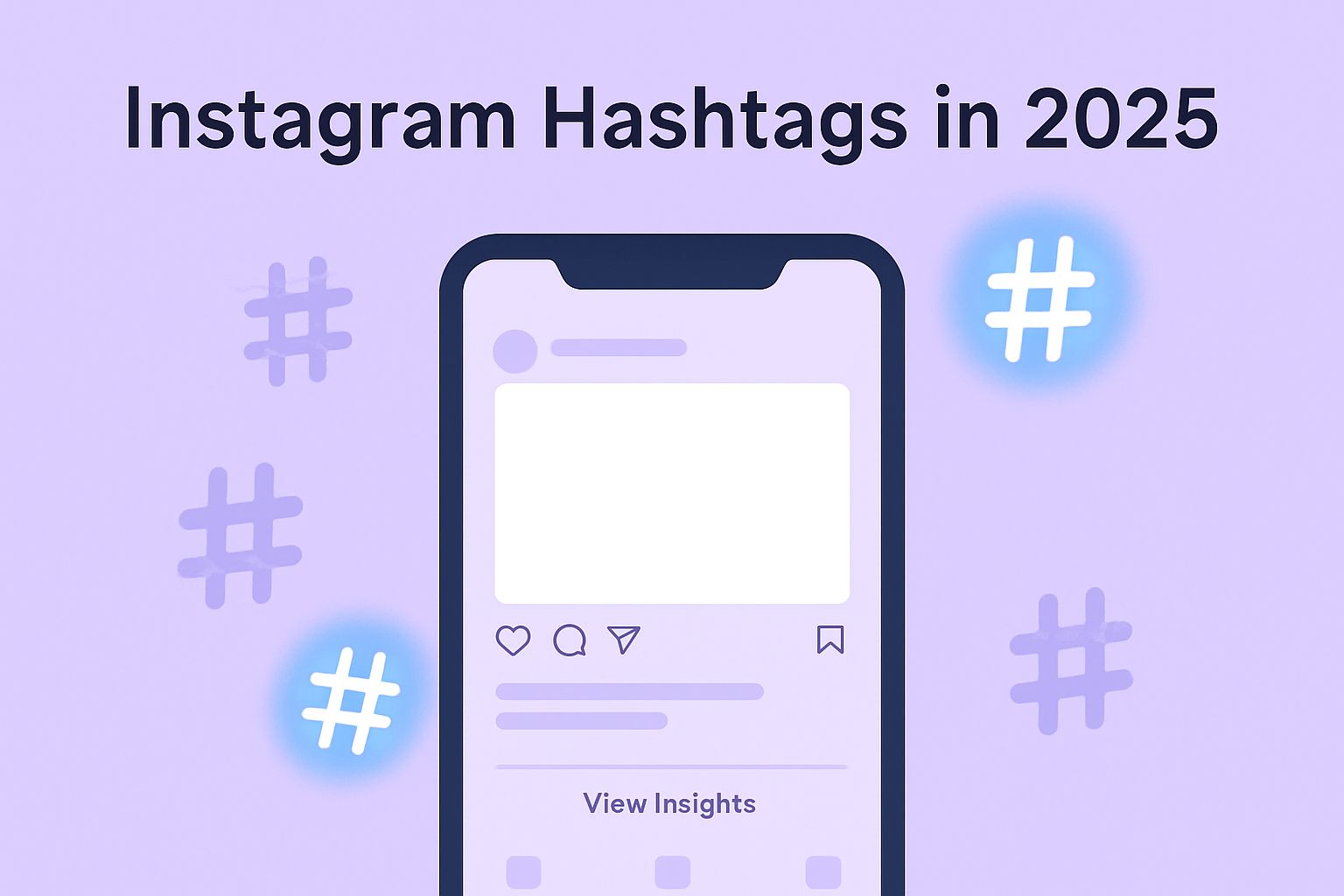Do Hashtags Still Work on Instagram in 2025?
There’s been a lot of confusion lately around hashtags on Instagram. One side says they’re outdated and irrelevant. Others swear by them and have the numbers to prove it.
The truth is more nuanced.
Hashtags still matter—but not in the way most people think. If you’re using 30 random tags hoping something sticks, you’re wasting effort. If you know how to use them strategically, they’re still a reliable way to drive traffic and improve visibility.
What Changed About Hashtags on Instagram in 2025

Back in the day, hashtags were the go-to growth tool. Everyone was cramming 30 of them into the first comment hoping to land on the Explore page. That tactic worked—for a while.
Then Instagram evolved.
Today, hashtags don’t carry the same algorithmic weight they once did. Instagram’s focus has shifted toward behavior-based discovery, especially with Reels. What people interact with, watch repeatedly, save, or share plays a much bigger role than whether or not a post has #motivation slapped on it.
But here’s what didn’t change:
Hashtags still function as search signals. When someone searches or follows a niche hashtag, your content can appear in that feed. This matters more than most people realize, especially for accounts that aren’t already huge.
Instagram’s own leadership hinted that hashtags are now treated more like metadata. Think of them less as a growth lever and more as supporting structure for categorizing content. This puts them in the same camp as captions, alt text, and location tags.
If you ignore them completely, you’re removing a piece of that structure. It won’t kill your content, but it limits its reach—especially in non-Reels formats like static posts or carousels, where hashtag discovery still plays a role.
Why the “Hashtags Are Dead” Claim Doesn’t Tell the Full Story

There’s a reason so many people are confused.
When a platform’s CEO says hashtags aren’t important anymore, it tends to ripple across the creator space. But the reality isn’t black and white.
Here’s what usually gets missed:
-
Some accounts don’t need hashtags anymore.
Creators with a large following, strong engagement, and regular viral content can afford to skip hashtags because their momentum comes from elsewhere. -
Not all growth is visible.
When someone gains followers without hashtags, that doesn’t mean hashtags wouldn’t have helped—it just means they succeeded through other channels. -
The data varies per niche.
Certain niches like education, food, DIY, and fitness still see strong engagement from well-placed hashtags. -
Even the CEO’s wording is cautious.
Instagram’s leadership often avoids giving hard yes/no answers. “You don’t need to” or “it’s not required” isn’t the same as saying they don’t work.
So while it’s true that hashtags aren’t the magic growth tool they once were, calling them “dead” is misleading. It all comes down to how—and where—you use them.
How Many Hashtags to Use (and Where to Put Them)

The old 30-hashtag strategy isn’t just outdated—it’s a signal that you might not be adapting to how Instagram works today. While Instagram still technically allows up to 30 hashtags, using that many does more harm than good.
Here’s the rule that works now:
Stick to 3–5 relevant, niche hashtags.
That sweet spot gives your post a boost in discoverability without looking spammy or unfocused. Fewer hashtags also make it easier to assess what’s actually working.
Where should you put them?
The most effective place is still the caption. Putting hashtags directly in the caption ensures they’re recognized as part of the metadata Instagram scans for categorization.
Posting them in the comments might still work in some cases, but it adds unnecessary risk. If the goal is visibility and tracking, keep it simple—put them directly in the caption, ideally at the end.
Choosing the Right Hashtags: Niche Over Reach
Generic hashtags like #funny, #food, or #viral have millions of posts attached to them. Sounds great in theory—huge potential reach, right?
Not really.
These tags move so fast that your content gets buried almost immediately. Even worse, you’re competing with accounts that already dominate those feeds.
Instead, the focus should be on hyper-niche hashtags.
Let’s say you’re running a page about easy, budget-friendly meals. Instead of #cooking, you’d go with:
-
#easycookingathome -
#budgetfriendlyrecipes -
#mealsunder10
These may have fewer total posts, but they attract a more intentional audience.
This principle applies across niches:
-
Fashion? Try
#minimalistwardrobeinstead of#fashioninspo -
Fitness? Go with
#homelegdayworkoutover#gym -
Content creation? Use
#captionwritingtipsinstead of#socialmedia
Smaller hashtags may feel like a slow game, but they’re more sustainable. They position you where it counts—in front of the right eyes, not just the most eyes.
Repeating the Same Hashtags: Smart Consistency or Spam Risk?
A common question: If I use the same hashtags on every post, will Instagram flag it as spam?
The short answer: Not necessarily.
Using the same 1–2 hashtags consistently can actually work in your favor—especially if you’re trying to build topical authority around a specific theme.
That said, repeating an entire set of identical hashtags in every single post isn’t smart.
Here’s a simple structure that avoids this:
-
1–2 hashtags you use all the time (brand- or niche-related)
-
2–3 that change based on post content
This approach avoids spam signals while reinforcing your topical authority.
How to Know If Hashtags Are Actually Helping Your Reach
This part gets overlooked more often than it should: You can track hashtag performance.
On any post, go to:
Post → View Insights → Reach → Impressions from hashtags
If that number is consistently low or zero, your current hashtags aren’t helping.
You can also use external tools to track this more precisely:
-
Flick: Test, track, and rotate hashtags intelligently.
-
Path Social: Align hashtag use with your audience and goals.
-
Metricool: Compare hashtag results across accounts or campaigns.
Tracking removes the guesswork. It shifts your strategy from “throw it at the wall” to “use what actually works.”
Why Some Creators Don’t Use Hashtags (and Still Win)
Some creators have managed to grow huge audiences without using hashtags—and that’s true. But context matters.
These creators often:
-
Post Reels consistently
-
Already have an engaged audience
-
Benefit from algorithmic momentum and shares
If your account is still growing, skipping hashtags might limit your visibility.
Hashtags aren’t what fuel growth—but they can help build consistency in visibility while the rest of your strategy picks up speed.
A Repeatable Hashtag Strategy You Can Actually Stick To
If you want to use hashtags in a way that supports your content without feeling like guesswork, here’s a reliable approach:
1. Use two anchor hashtags
Stick with them across most posts. They help establish consistency in feeds.
2. Add 2–3 rotating hashtags
Change them depending on the post.
3. Avoid generic hashtags
Skip tags like #reels, #explorepage, or #viral.
4. Put them in the caption
Clean formatting, placed at the end of your caption.
5. Review performance weekly
If your hashtags never drive impressions, adjust them.
6. Use a tool to streamline it
Flick makes it easy to manage and test hashtags.
Systeme IO can help you schedule and rotate them efficiently.
Hashtags Still Work—If You Know How to Use Them
In 2025, hashtags aren’t magic bullets—but they’re not dead either.
They’ve shifted from being viral growth tools to serving a more strategic role in content discovery. When used intentionally, they help surface your posts to the right people, support topic relevance, and strengthen visibility—especially when you’re still building traction.
What matters is how you use them:
-
Keep them relevant and niche.
-
Focus on clarity, not quantity.
-
Track what’s working instead of guessing.
Skip them if you’ve got other engines running. Use them wisely if you’re still building momentum.
Either way—use what’s working for your content, not just what sounds trendy.
